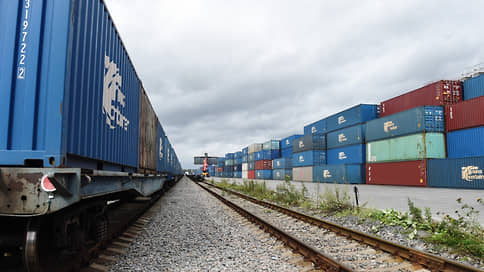The negative rate on the supply of containers from the central regions of the Russian Federation to China is growing
[ad_1]

The growing accumulation of containers in the central regions of Russia leads to the fact that railway operators are ready to pay more to shippers for sending them to China: the discount for the transportation of a loaded 40-foot container from Moscow already reaches $1.2 thousand. However, the opposite situation has developed in Irkutsk and Krasnoyarsk, where there is a high demand for timber containers. Containers are delivered there from Moscow at a discount that covers almost the entire cost of transportation, and from there to China, on the contrary, they are sent at a high premium. However, market participants note that the demand for lumber transportation to China, albeit high, is seasonal, and there is no serious shortage of containers in Eastern Siberia.
The negative rate on the supply of containers from the central regions of the Russian Federation to China is growing, according to a new analytical report by the Center for Price Indices (CPI) of Gazprombank. In June, Kommersant reported that, according to the calculations of the CCI, for the transportation of cargo from Moscow to China in a 40-foot container owned by the operator, he gives the client a discount of $ 0.4-1.1 thousand, when transported from St. Petersburg and Yekaterinburg – up to $400 (see Kommersant of June 21). Now the rate of issue of a 40-foot container in Moscow reaches minus $1.2 thousand, in Yekaterinburg – minus $650, according to the report: in large Russian agglomerations, the surplus of container equipment is increasing along with the growth of container cargo imports from China to Russia, which forces operators to increase the amount of subsidies.
Discounts were also observed on certain domestic routes, reaching 50,000–120,000 rubles for flights from Moscow to Vladivostok. for a 40-foot container, from Moscow to Novosibirsk – 50-70 thousand rubles. Now, due to the elimination of local deficits / surpluses and the reduction of subsidies for the issuance of containers, the tariffs of operators have increased: in the Moscow-Vladivostok direction – by 4.6% when transporting a 40-foot container and by 31% when transporting a 20-foot container, in the Moscow-Vladivostok direction – Novosibirsk — by 10% and 2.3%, respectively.
The exception is some regions of Siberia with a chronic shortage of container equipment (exporters of timber and pulp and paper products), the study notes. Thus, the lowest rate for the transportation of containerized cargo (5.7 thousand rubles without VAT) remains on the Moscow-Krasnoyarsk route, “where the negative rate for issuing a 40-foot container almost completely covers the infrastructure tariff of Russian Railways, the rate for providing a platform and other costs.” And when submitting to China from Krasnoyarsk, the fee for issuing a 40-foot container, on the contrary, is positive and amounts to $1.2 thousand. Irkutsk and Krasnoyarsk, which indicates a shortage of containers in Eastern Siberia.
Rail transport of containers is on the rise. According to Russian Railways, in June, 618.3 thousand TEU were sent in all types of traffic (15.1% more than a year earlier), in seven months – 3.1 million TEU of loaded containers (plus 18.6%) from 43 million tons of various goods (growth by 16.8%). The largest growth was noted in the transportation of chemical and mineral fertilizers (by 2.4 times), cars and components (by two times), vegetables and fruits (by 1.5 times), and container transportation of construction materials also increased in the range of 20-40%, oil and oil products, machines, machine tools and engines, grinding products and other foodstuffs. At the same time, transportation of timber cargo in containers increased slightly – by 0.4%, to 342.1 thousand TEU, paper – by 2.9%, to 215 thousand TEU.
Exports of timber products, especially sawn timber, have a pronounced seasonality throughout the year, according to the Eurasian Union of Rail Freight Transport Participants (ESU, which unites most container operators). This is due to restrictions on the removal of sawlogs from the plots in spring and autumn. Now a fairly predictable increase in demand for services for the export of lumber from Russia to China, the press service of the ESP quotes Vitaly Potapov, CEO of Logoper (part of the union). As Mr. Potapov noted, the subsidized rate from Moscow to Krasnoyarsk is due not only to the shortage of containers in the Krasnoyarsk Territory, but also to restrictions on the part of Russian Railways on shipments in the direction of the Eastern Range (containerized cargo competes with other cargo and types of rolling stock). According to him, there is no serious shortage of container equipment in Krasnoyarsk today, which indirectly confirms the level of rates, which does not show explosive growth.
[ad_2]
Source link





